Showing 71–80 of 142 results
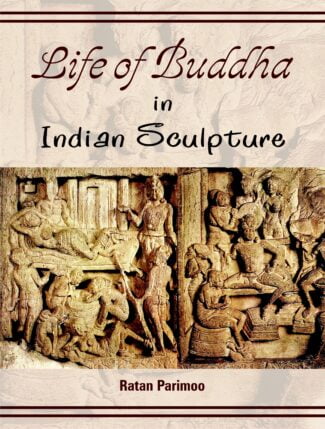
The book traces the beginning of narrative compositions in reliefs depicting the life of the Buddha and analyzes these sculptural depictions of events relating them to biographical texts on him. Supported by over 210 illustrations including drawings and photographs, the work reveals the process of symbolization in visual forms and participation of the sculptors in the process.
The life of the Buddha has been a great source of perennial inspiration to scholars, artists and poets since the early times. Many events from the life of the Buddha have inspired some of the greatest relief compositions in Indian art, which have been depicted in sculptures and monuments.
Tracing the beginning of narrative compositions in reliefs delineating the life of the Buddha, the book analyzes these sculptural depictions of events in the context of several biographical texts on him. The episodes represent the Buddhas birth, enlightenment, first sermon and miracle at Shravasti, descent from Tuùita heaven, subduing of Nalagiri, culminating with mahaparinirvana. The book explores how some of Buddhas basic teachings are linked with certain specific episodes of his life. It highlights the difference between representations of the same events by artists at various periods and places and the differences between the textual description and its sculptural counterpart. It also undertakes a survey of the inspiration provided by the theme of the Buddhas life to devotees and artists in other Asian countries as revealed in their iconography and sculpture.
Supported by over 210 illustrations including drawings and photographs, it reveals the process of symbolization in visual forms and participation of the sculptors in the process. It shows that the sculptural reliefs provide a fascinating insight into the creative mind of the Indian artist: how he invented visual devices and integrated them into the formal structure and the story content and imparted meanings in each sculptural relief. The volume will be essential reading for students and scholars of art history and Buddhist art in particular.
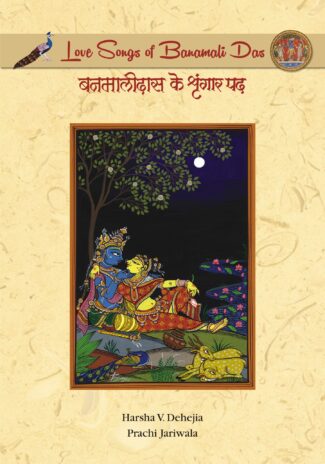
This volume, while discussing the poetic genius of Banamali, portrays the varied forms of pata paintings, associated with the painters of Puri. Though the Rasalila of Krishna and the gopis is their favourite, the topic of dashavatara is very common in pata painting, displaying a special liking for navagunjara painting.
The heart of Odishan arts lies in the villages of Odisha. The songs and dances, the wall paintings and patachitras, fabrics and textiles, all are rooted in the rural sensibility of Odisha. When its people sing the love songs of Krishna or paint his leelas and kridas, they recreate Vrindavana in their on village square. Krishna sharingara reflects and echoes in each leaf and flower, and song and dance of Odisha. It is more vibrant in the verses of the eighteenth century Banamali Das, who wrote a moving Krishna poetry. He celebrated the many leelas and kridas of Krishna and in doing so he experiences every hue and shade of Krishna shringara. He reminds one of the works of Jayadeva and Vidyapati, and enters the mind and heart of Radha more than any other poet. Grounded on the theology of Chaitanya, he bountifully uses words such as ujjala rasa, mohajana and ashta sakhi, firmly establishing him as part of the Gaudiya tradition.
This volume, while discussing the poetic genius of Banamali, portrays the varied forms of pata paintings, associated with the painters of Puri. Though the Rasalila of Krishna and the gopis is their favourite, the topic of dashavatara is very common in pata painting, displaying a special liking for navagunjara painting. It also contains a conversation with Sujata Mohapatra, an accomplished Odissi dancer, who dances to the compositions of Banamali Das.
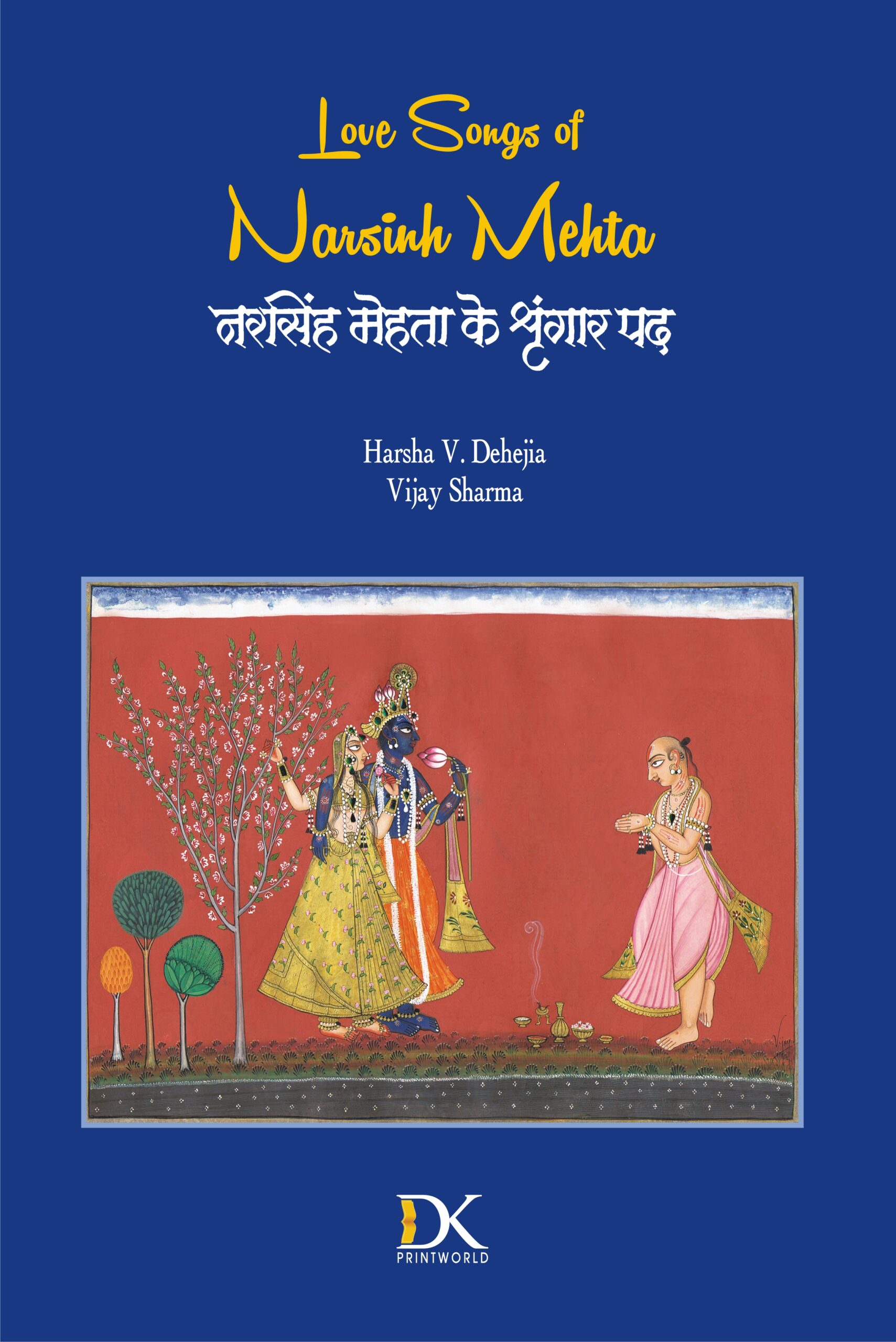
Love Songs of Narsinh Mehta is a commentary on the love songs of Narsinh, adi-kavi of Gujarat. Narsinh sings the glory of Krishna in total devotion as if Krishna is sitting in front of him. For him, Krishna is divine and human, both at the same time. Being Krishnas love, he brings in all emotions and cues of devotional love to his poetry.
Love Songs of Narsinh Mehta is a commentary on Narsinh Mehtas love songs. Narsinh (1408-65), a Vaishnava bhakti poet of medieval India, is considered as the adi-kavi of Gujarat. He is also regarded as a shringara kavi, a poet of romance. The quintessence of his bhakti is prem and his prem has inherent bhakti, and therefore his poetry is regarded as shringara bhakti kavya. Essentially shringara is the romantic celebration of the other, and when Narsinh’s other is none other than Krishna, his shringara kavya becomes Krishna bhakti, where Krishna is both divine and human, at the same time. Singing for Krishna, Narsinh celebrates his swami through amorous verses and divine surrender like Jayadeva.
He sat in a temple and relentlessly sang for his Lord, living through absolute poverty. Nothing made him more jovial than singing the glory of his Krishna. The only man for Narsinh is Krishna, and for the latter Narsinh is a woman at heart. Narsinh, through his songs, brings in the cue of all romantic feelings and moments, recreates the idyllic Vrindavana in ones mind, and he returns that Vrindavana a Vaikuntha with the footfalls of his Krishna.
Through this commentary, the author Harsha V. Dehejia introduces one to the fullness of Narsinhs poems, thereby making one known to Narsinh in and out.
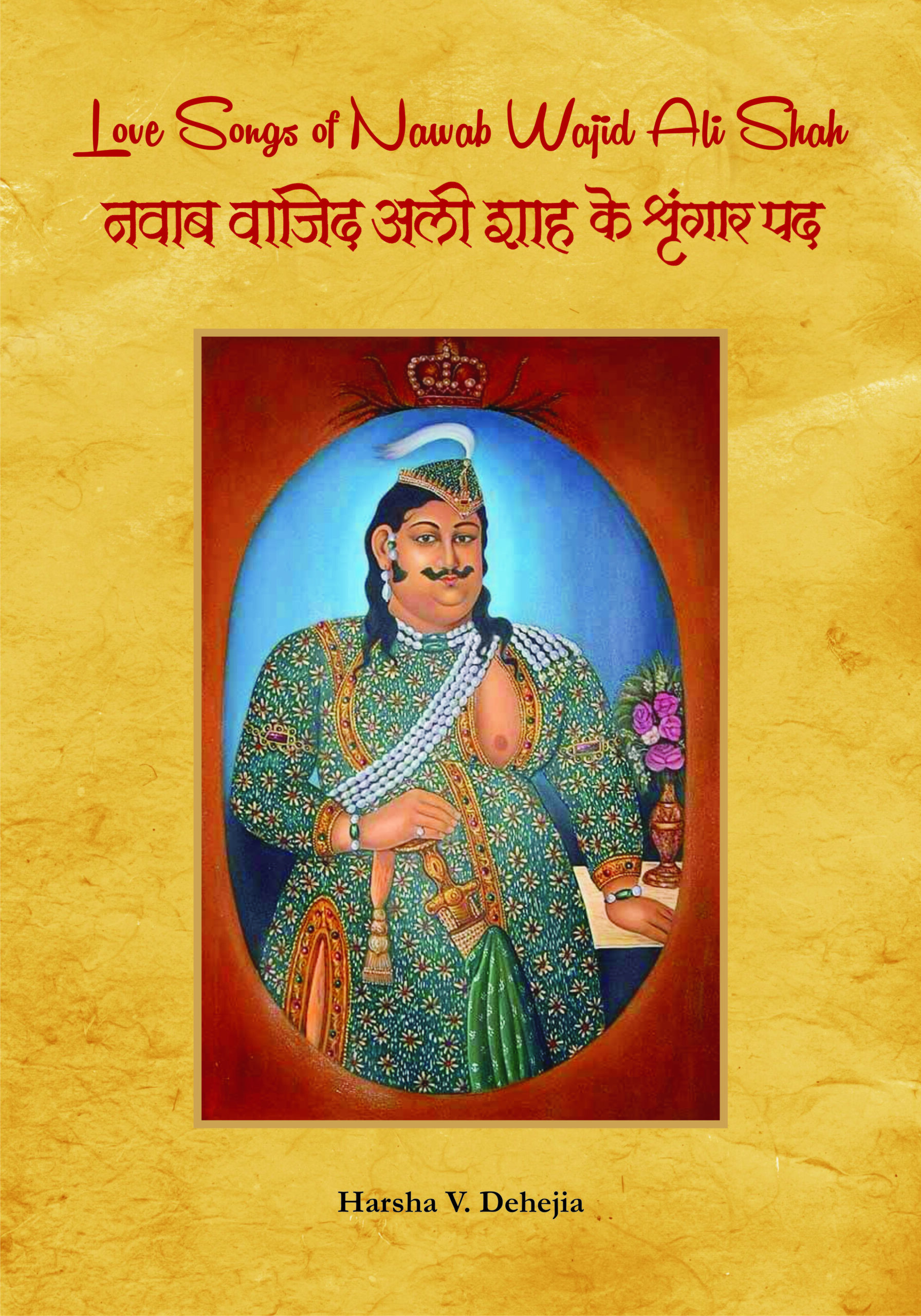
This impressively illustrated volume brings forth the evergreen spirit of a Muslim ruler of Awadh, Nawab Wajid Ali Shaw (1822-87), in composing love poetry taking a cue from the amorous Krishna leela and assimilating and practising the same in personal life. A trained Kathak dancer himself and a dedicated patron of poetry, painting and performing arts, Wajid Ali Shah immersed in the rasa of dance, music and drama, and got deeply indulged in the many an expression of shringar, while administering the political affairs of his state.
Recalling the different facets of Nawab Wajid Ali’s life, the book explores the state and fame of Lucknow, of his times, where the Nawab lived a life of refinement and pomp, and attracted the best talents in arts and crafts. It also portrays how were dance and music enjoying pride of place during his reign.
While presenting a penetrating account of Ali Shah’s poetry, the book revisits his musical scholarship, history of his times and presents his poems with English translation. It as well showcases the best paintings centring around his personal and cultural life, and guides one go through the religious and cultural harmony prevailed in Awadh where a lot of factors were at play effecting acculturation between the Hindus and the Muslims, popularly known as the Ganga-Jamuni tehzeeb.
This impressively illustrated volume brings forth the evergreen spirit of a Muslim ruler of Awadh, Nawab Wajid Ali Shaw (1822-87), in composing love poetry taking a cue from the amorous Krishna leela and assimilating and practising the same in personal life. A trained Kathak dancer himself and a dedicated patron of poetry, painting and performing arts, Wajid Ali Shah immersed in the rasa of dance, music and drama, and got deeply indulged in the many an expression of shringar, while administering the political affairs of his state.
Recalling the different facets of Nawab Wajid Ali’s life, the book explores the state and fame of Lucknow, of his times, where the Nawab lived a life of refinement and pomp, and attracted the best talents in arts and crafts. It also portrays how were dance and music enjoying pride of place during his reign.
While presenting a penetrating account of Ali Shah’s poetry, the book revisits his musical scholarship, history of his times and presents his poems with English translation. It as well showcases the best paintings centring around his personal and cultural life, and guides one go through the religious and cultural harmony prevailed in Awadh where a lot of factors were at play effecting acculturation between the Hindus and the Muslims, popularly known as the Ganga-Jamuni tehzeeb.

Love Songs of Rasakhan is one among the numerous works of medieval Muslim Vaishnava poets. His original name was Said Ibrahim. On seeing a picture of Shrinathji, Said Ibrahim instantly fell in love with Krishna. His love for Krishna made him yearn for a vision of Krishna.
Love Songs of Rasakhan is one among the numerous works of medieval Muslim Vaishnava poets. A sixteenth-century poet, Rasakhan was born in a Pathan Muslim family at Pihani in Uttar Pradesh. His original name was Said Ibrahim. On seeing a picture of Shrinathji, Said Ibrahim instantly fell in love with Krishna. His love for Krishna made him yearn for a vision of Krishna. He stayed with Krishna devotees in Braj, but could not get a vision of Krishna. He unsuccessfully tried his luck at the Gopalpura Shrinathji Temple and finally went to Govindkund and lay there three days without food and water. Pleased, Shrinathji gave him darshan and this made him to move on the Pushtimarg with the guidance of Gosain Vittalnath.
He spent his entire life in Brij composing songs of the many lilas of Radha and Krishna with the pen-name, Rasakhan. Touched by the sensuality of the love of Radha and Krishna, he produced many mellifluous and melodic songs, celebrating their love.
Other than his poetic genuis, this bilingual illustrated volume contains the stories of 252 Vaishnavas, articles on Rasakhan: A Poet and His Poetry; Medieval Muslim Vaishnava Poets; Rasakhan and the Fluidity of Identity; The Mind of Rasakhan; Muslim Vaishnavas of Bengal; and Poets, Painters & Patrons, being Krishnalal Sharma; Narmada Prasad Upadhyaya; Vidya Rao; Harsha V. Dehejia; Sumanta Banerji; and Harsha V. Dehejia as respective authors.
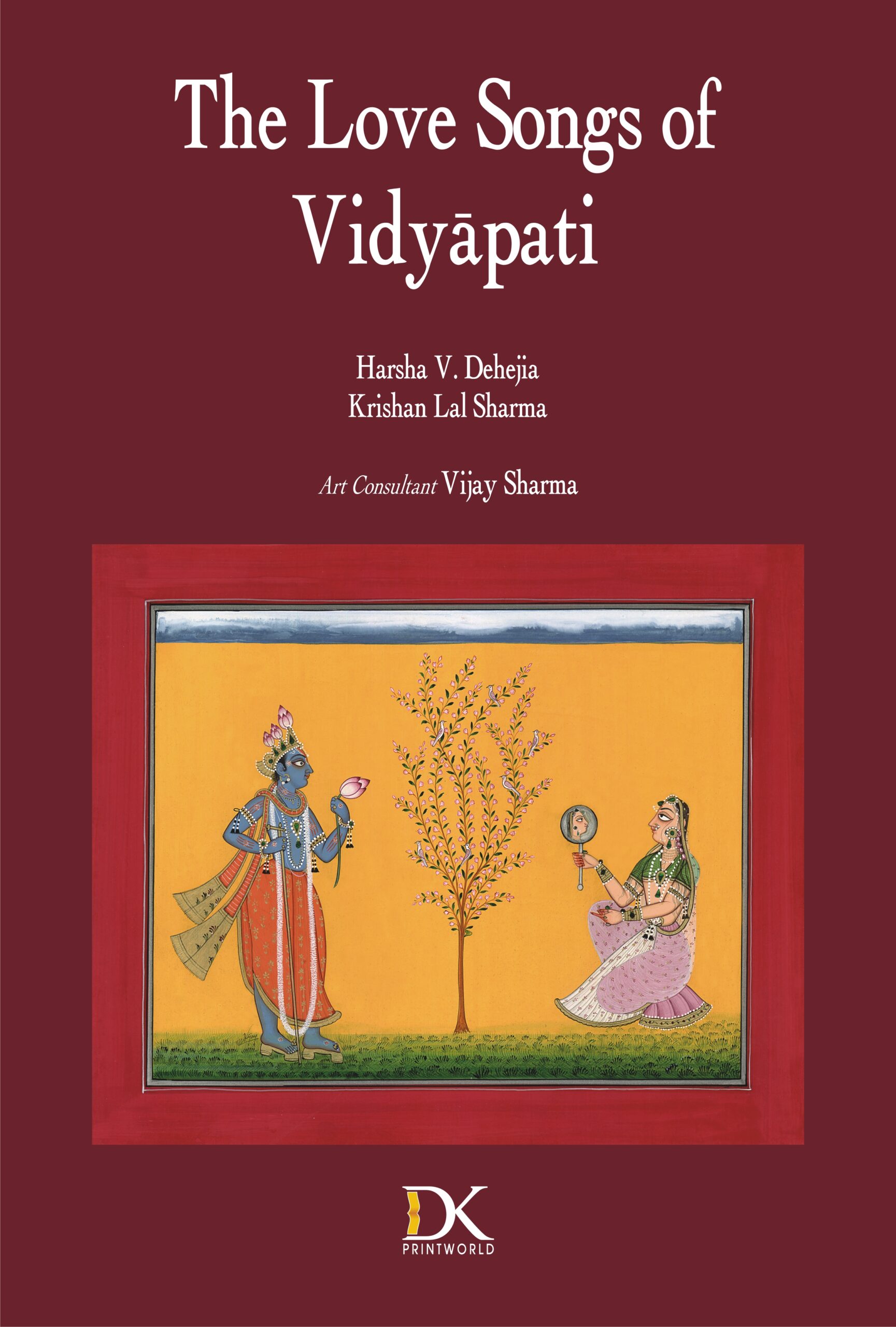
This portfolio, based on the ten Maithili love songs of Vidyapati, presents lovely paintings on the varied love moods of Radha: her sensuous charm, innocence, longing for Krishna, surrender to love, etc.
Vidyapati (c. 13521448), called second Jayadeva in his lifetime, is immersed, charged and inspired by the love of Radha and Krishna. He wrote emotionally-intensive love songs in Maithili, for the queens of Shiva Simha, his patron, and the common folk. Though drawn inspiration from Jayadeva, more than him, Vidyapati presents in his poetry a rare, tender and sensitive understanding of Radhas psyche. In his love songs Radha, not Krishna, is in the centre stage and through his nayika Vidyapati is reaching out to each and every woman in Mithila.
Vidyapati presents his songs from a womans heart, and describes his nayikas slowly awakening youth, her sensuous beauty, her coyish charm, her naïve innocence, her surrender to love and her anguish on being neglected. She is invariably sensual, spiritual, physical and emotional. Though she did not inspire painters of the time, she ruled the hearts of the people of Mithila. Vidyapatis love songs are written in honeyed words and are sung with mellifluous notes in homes, fields, chowks and havelis, across eastern India. And thus he still rules their heart.
This portfolio, based on the ten love songs of Vidyapati, presents lovely paintings on the varied love moods of Radha, the love queen. In doing so, different artists have displayed their dexterity in Jaipur, Caurapancashika, late Mughal, Manaku, Kishangarh, Jain, Kangra and Basohli styles.

From time immemorial a family Þ consisting of father, mother, son, his wife, and their childern Þ has been accepted as a sacred institution in all societies Þ urban, rural, tribal or uncivilized, or even among animals to a certain extent. In the family, besides love and affection, the main factors cementing the bond between members are some virtues and morals like obedience, faithfulness, honesty, and, above all, chastity, not only for women but also for the men. In Hindu thought Lord Shiva and Goddess Parvati are considered the ideal parents as well as the ideal couple. In four books Þ Pita, Maa, Pati and Patni Þ pleasingly embellished with self-explaining paintings, Mr K.N. Kogata and Mrs Lalita Kogata have extolled the roles, activities, and moods of these important members of the first family with charming and delightful verses.
Sree Maatre Namah Pranaams to mother. With these words starts Latitaa Sahasranaam, or the 1,000 names of Devi. The privilege you can take with your mother, you cannot take even with your father. During the nine months a baby is inside the mother, the mother gives her own food, blood and nourishment to the unborn foetus so that it could develop into a fullgrown baby. During the nine months and during child-birth, the amount of fasts, hardships, worries, discomfort, sleeplessness, and pain a mother undergoes even if you give her the whole world it is no compensation at all. Our epics, Puranas, Upanishads, etc. all extol the highest importance of a mother in society. Mother is equally revered in all cultures throughout the world. In Annapoornaashtakam, Shankaracharya says annapoorne sadhaaporne. . . maataa cha parvati devi, pitaa devo maheshwara. . . . That means, Shankaracharya sees Parvati as the universal mother and lord Shiva as the universal father. In a similar way, the Kogatas have seen Parvati and Shiva, and have beautified this book with pleasing illustrations of both of them in different activities and moods, followed by charming and delightful verses.

In recent years mandalas have attracted much interest and the main focus of such interest has been directed towards Tibetan mandalas. But mandalas are found across a wide spectrum of South Asian religious traditions as well including those of the Hindus and Jains. Hindu mandalas and yantras have hardly been researched. This book attempts to fill this gap.
Mandalas and Yantras are used in rites of worship in a wide range of Hindu, Buddhist and Jaina religious traditions. This volume has scholarly articles that deal with the little-researched subject of mandalas and yantras in specific Hindu traditions-Smarta, Pancaratra, Shaiva and Shakta traditions. The articles discuss mandala-like arrangements and the navagrahamandala in the ritual practices of Smarta Brahmins in Maharashtra. Use of mantras and yantras in the Vaishnava Pancaratra tradition is studied on the basis of passages from the Samhitas. They concentrate on the Siddhanta school, pre-11th century Shaiva Mandalas expressing the link between branches of Shaivism and between Shaiva and non-Shaiva groups, and description of use of mandalas in Abhinavaguptas Tantraloka. The shricakra is explored as a cosmic than a ritual diagram which has immense religious/spiritual significance. A slightly different attempt examines application of vastumandala, as described in Varahamihiras Brihatsamhita, in temple architecture. Parallels are drawn between the rituals taken up here and others like Buddhist tantric initiation rites. The writings consult many religious texts including the Sharadatilaka, the 11th-century Yoginihridaya and the Svacchandatantra to understand mandala structure and rituals. A highlight of the volume is the inclusion of numerous reproductions of mandala designs and other drawings and extensive notes. The volume will be useful for Indologists studying Hindu religious traditions, particularly mystical rituals and rites of Vaishnava, Shaiva and Shakta traditions.
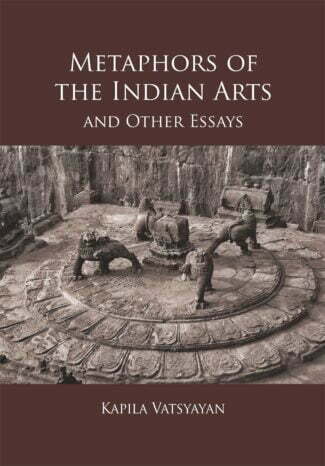
This anthology is a selection of writings of Dr Kapila Vatsyayans nearly four-decade long journey as an art critic and art historian. It reveals the distinct nature of Indian arts from the angle of the world-view in which they emerge. At the same time, it amply shows the theory of art and aesthetics which may enable us to to see the other traditions of art from our own window.
This anthology Metaphors of the Indian Arts and Other Essays is a selection of writings of Dr Kapila Vatsyayans nearly four-decade long journey as an art critic and art historian. It reveals the distinct nature of Indian arts from the angle of the world-view in which they emerge. At the same time, it amply shows the theory of art and aesthetics which may enable us to to see the other traditions of art from our own window. In a seminal article entitled Metaphors of the Indian Arts, the author identifies some fundamentals which permeate the Indian artistic traditions.
In the article entitled Mountain, Myth, Monuments Dr Vatsyayan discusses the significance of mountains and the sanctuaries, diversity of attitude and approaches to them in Indian context. She focuses on sacred mountains, especially Kailasa, which have dominated the Indian imagination for many millennia in the world of literature, architecture, sculpture, music and dance.
The attitude to the human body as also the self-consciousness of the relationship of the senses and the mind in diverse civilizations has been of special interest to the author for decades. In the article Early Evidence of Female Figures, Music and Dance, she points at essentials of treating the human body in Indian art, specially the female body, over a long span of history. She draws attention to the large measure of consensus on the identification of meaning of the particular or single image or relief, ranging from the examples from Mesopotamia to Assyria to Egypt and the figurines and statues of the Indus Valley, Mohenjo-Daro, Harappa and Mehergarh.
Further she returns to explicitly stating the ideational background of Indian aesthetics. Finally, she identifies certain motifs which have travelled across a vast geographical area, specially in South-East Asia.
Altogether, these essays will enable the reader to trace not only her journey but also her place in Indian art history as a carrier of a tradition of A.K. Coomaraswamy and Stella Kramrisch.